AWS Certified SysOps Administrator - Associate
Domain 3 Deployment Provisioning and Automation
Building With EC2 Image Builder for Automated Image Creation VMs and Containers
Welcome to this comprehensive lesson on leveraging EC2 Image Builder for automating the creation of Amazon Machine Images (AMIs), virtual machines, and container images. In this guide, we discuss the importance of golden images, the drawbacks of manual image building, and how an automated pipeline using EC2 Image Builder resolves these challenges.
Understanding Golden Images
Golden images are pre-installed, pre-configured operating systems enriched with essential software, configurations, and security settings. By adopting a standardized template, organizations can achieve consistency, reduce manual build errors, and maintain strict compliance with IT and security standards. A basic operating system installation, such as a plain Ubuntu install, typically fails to meet many enterprise security or operational requirements.
Manually constructing golden images presents several challenges:
- Time-intensive manual operations.
- Inconsistent configurations due to human error.
- Elevated security risks stemming from patch management difficulties.
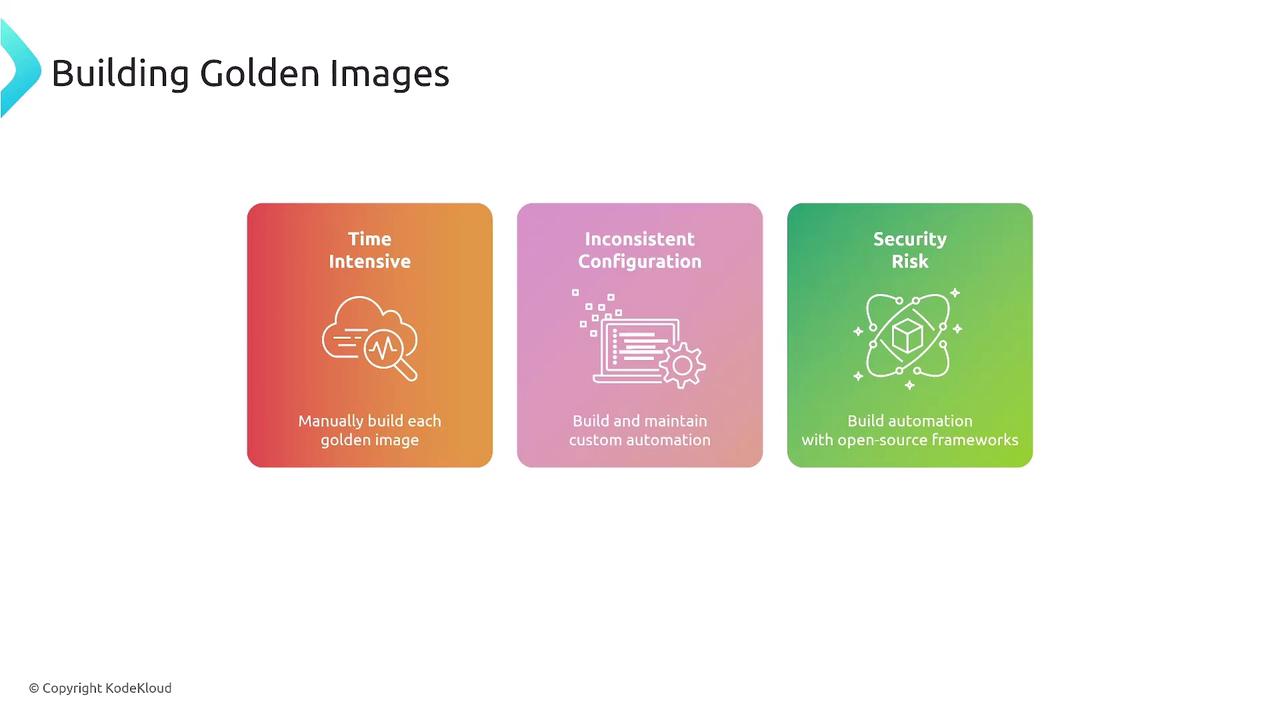
An automated pipeline, such as that provided by EC2 Image Builder, helps mitigate these issues by enabling bulk patching, ensuring consistent build processes, and enhancing security through continuous, repeatable procedures.
Why EC2 Image Builder?
EC2 Image Builder is AWS's native solution for streamlining the creation and distribution of AMIs and container images. Although third-party tools like HashiCorp's Packer are available, EC2 Image Builder is recommended for its seamless integration with AWS services and is a key exam topic.
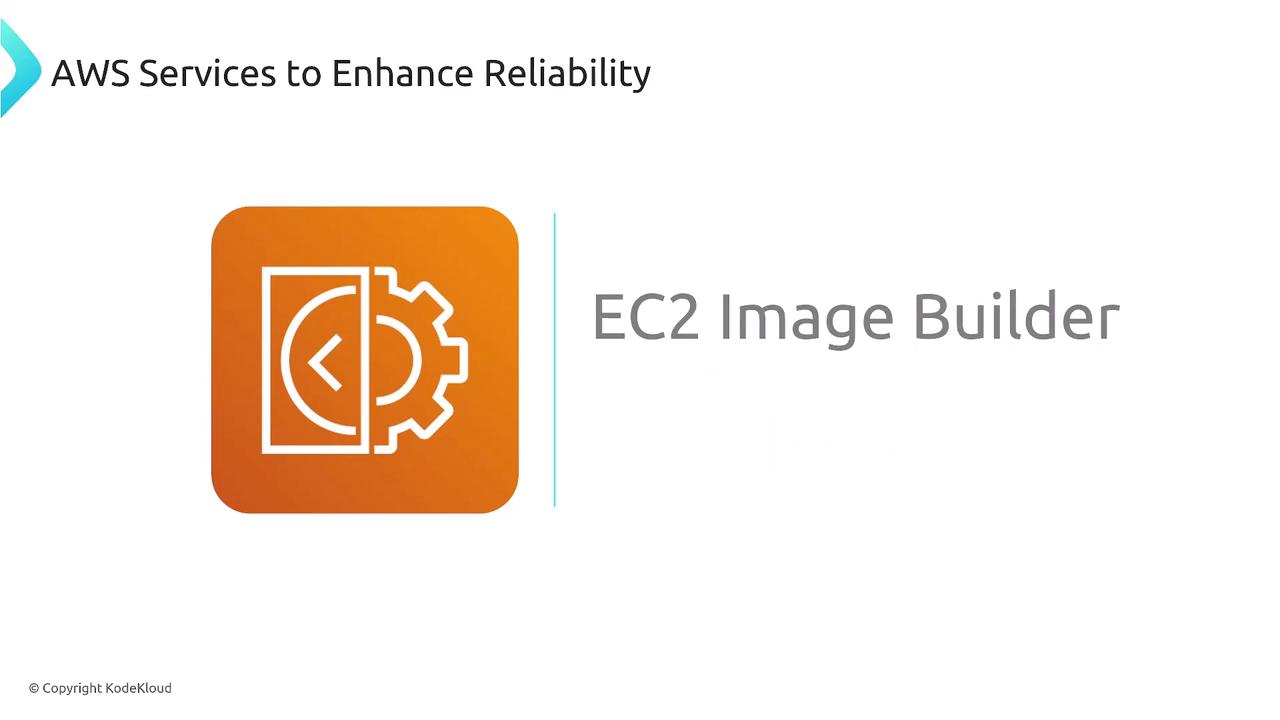
With EC2 Image Builder, you can automatically produce secure, compliant, and up-to-date images for both virtual machines and containers. This service establishes automated pipelines that cover the entire lifecycle—from image creation to distribution—ensuring efficiency across your infrastructure.
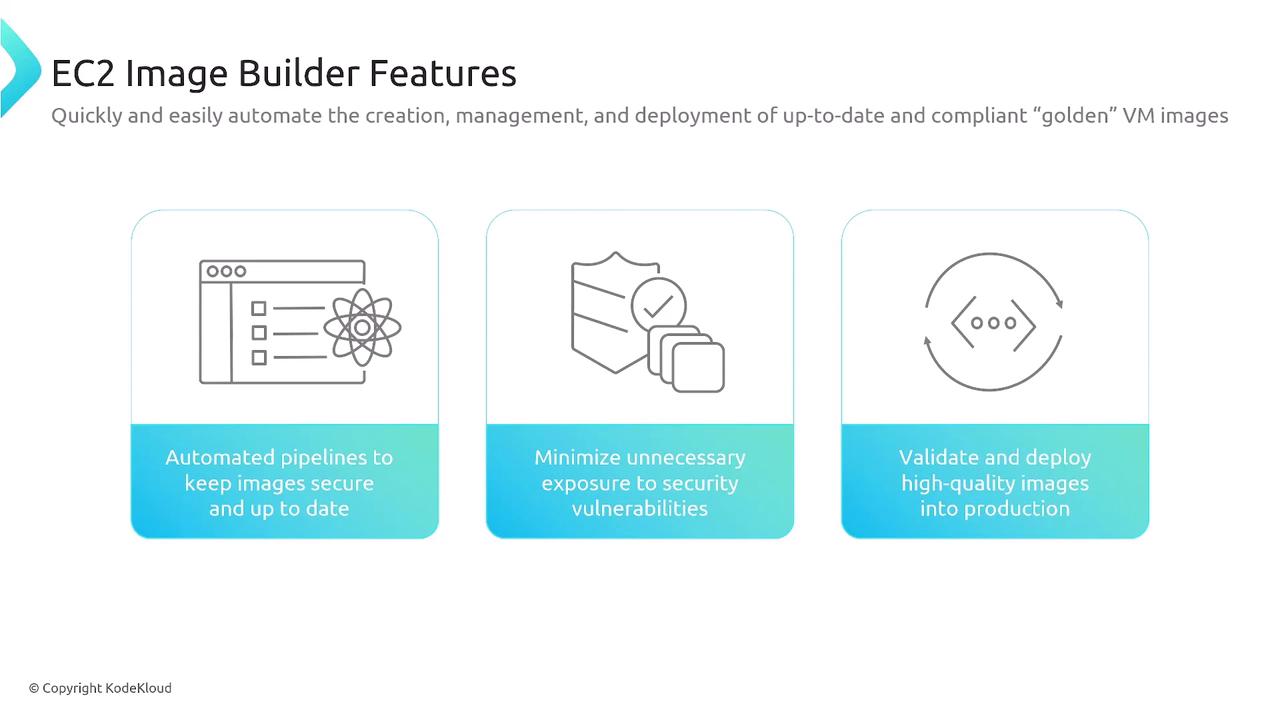
Key benefits of using EC2 Image Builder include:
- Policy enforcement that ensures images adhere to organizational guidelines.
- Support for distribution across both AWS and on-premises environments.
- Compatibility with Linux and Windows operating systems (with anticipated future support for macOS).
- Simplified image sharing across AWS accounts.
- Accommodation of various virtual hard drive formats, such as VHDX, VMDK, and OVF.
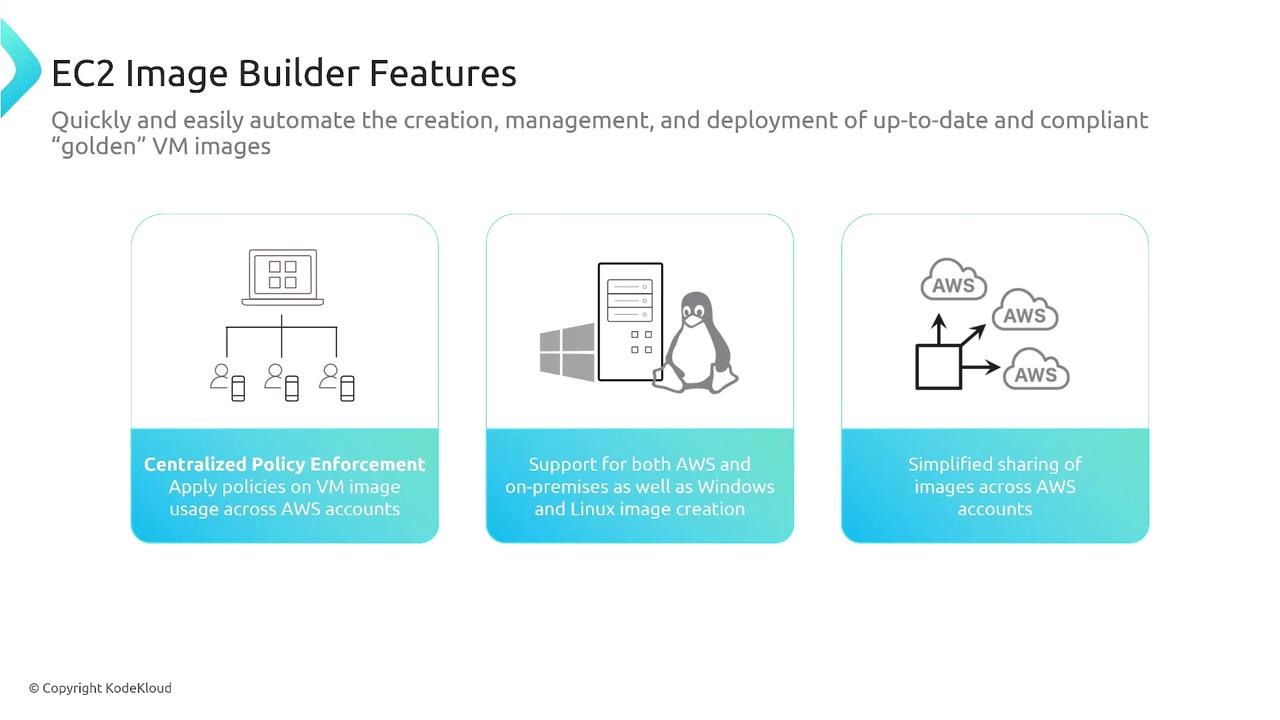
Key Advantage
Automating the image creation process with EC2 Image Builder not only saves time but also minimizes human error, ensuring that your images remain standardized and secure.
How EC2 Image Builder Works
The EC2 Image Builder process involves a series of methodical steps that ensure image integrity and compliance:
- Source Image Selection: Start with a base image, which could be either a clean operating system installation or a previously built image.
- Customization: Integrate custom components, software, and configurations to meet your specific operational requirements.
- Security and Testing: Enhance the image's security by applying patches, running comprehensive tests, and verifying that all configurations are correctly implemented.
- Distribution: Deploy the finalized image across your environments—whether as an AMI on AWS or as a container image in a registry such as Amazon ECR.
This workflow is orchestrated via EC2 Image Builder pipelines, each guided by an image recipe that details the parent image, necessary components, and configuration settings for both the build and distribution phases.
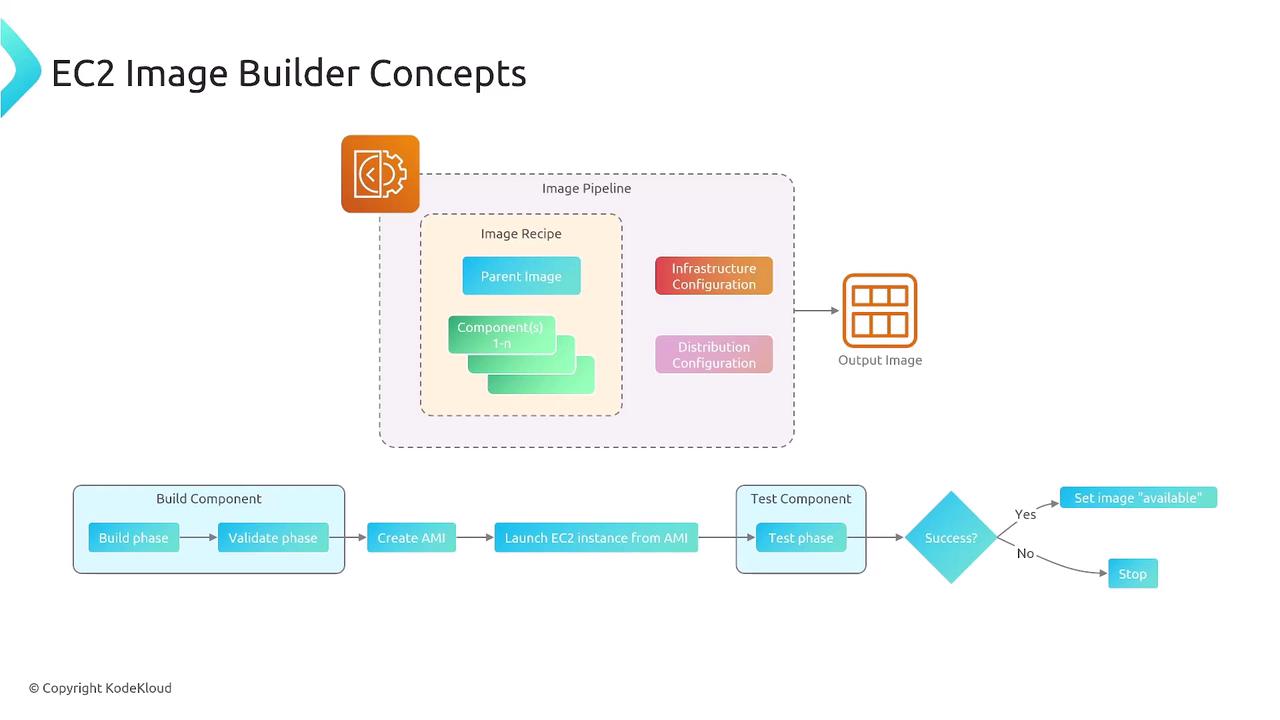
Detailed Pipeline Phases
- Build Phase: The pipeline takes the parent image and applies the designated customizations, resulting in a new AMI or container image.
- Validation Phase: A test deployment (for example, launching an EC2 instance or container) is utilized to confirm that the image functions as expected.
- Distribution Phase: Once verified, the image is marked as available and distributed to its intended registry. For container images, this usually implies deployment to an Amazon ECR repository.
Container Image Pipelines
Container image pipelines follow a process similar to AMI pipelines. The main difference lies in the distribution target—with containers typically using a Dockerfile-based configuration and being deployed to container registries.
Conclusion
EC2 Image Builder revolutionizes the process of image creation by automating traditionally manual, time-consuming tasks. By understanding the key components—source image selection, customization, validation, and distribution—you can seamlessly incorporate this powerful service into your continuous integration and deployment pipelines.
This guide has provided an in-depth look at the EC2 Image Builder pipeline and its advantages in creating secure, compliant, and high-quality images for both virtual machines and containers. With these insights, you'll be well-prepared to integrate EC2 Image Builder into your operations and confidently approach related exam topics.
Thank you for reading this lesson.
Watch Video
Watch video content